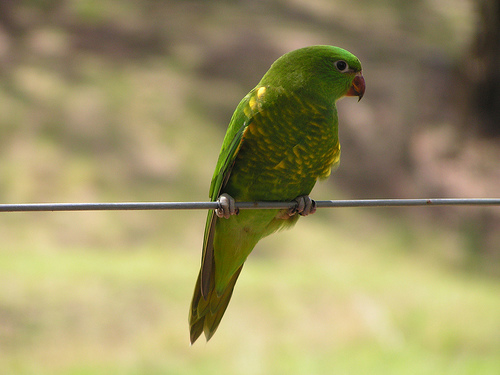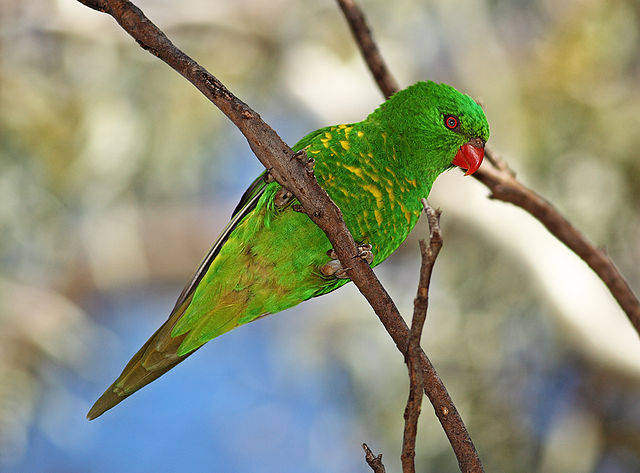
©Arthur Chapman: Scaly-breasted Lorikeet (Trichoglossus chlorolepidotus) with the brown bill and dark eye of a juvenile
Colours
Distinguishing features
The crown and sides of head are emerald-green slightly tinged with blue, while the feathers of the back of the neck and throat and breast are yellow, broadly edged with green, giving scaly appearance. The tail is green with the base of the outer tail-feathers marked with orange-red. The lower flanks, thighs and undertail-coverts green are strongly marked with yellow, while the underwing-coverts are orange-red. They have orange-red eyes, and their bills (beaks) are dark coral-red. Their legs are generally grey-brown.
Males and females are similar in external appearance. Juveniles appear similar to adults, but their tails are shorter.
Eyes are pale brown or black, and bills are brown with some yellow markings or orange with brown markings. (Wikipedia)
Size
- Up to 30 cm (Length of specimen)
Wingspan
- Up to 46 cm
Synonyms
Distribution
Distribution and habitat preferences
It is common in most timbered areas of Eastern Australia from Bamaga, the tip of North Queensland, south to Illawarra district on the New South Wales south coast; also on some offshore islands. They are generally confined to coastal plains and adjacent tablelands; occasionally found along watercourses west of the Great Dividing Range. They are abundant and mostly sedentary in north; less numerous and nomadic in the south. They favour open, lightly timbered areas and Melaleuca thickets. (Wikipedia)
Diet
Scaly-breasted Lorikeet have similar habits to the related Rainbow Lorikeet, and the two species often group together in mixed flocks. Both species feed mainly on nectar, such as that from the Broad-leaved Paperbark (Melaleuca quinquenervia), and pollen, but they also eat blossoms, berries, other fruit, and insects and their larvae. (Wikipedia)



